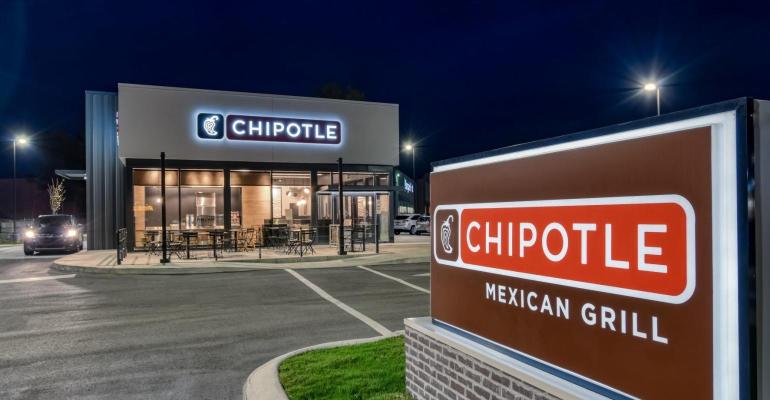A small town is defined by the U.S. Census Bureau of having a population between 25,000 and 50,000. Chipotle has made it clear in recent quarters that small towns are a big opportunity for the chain, and much of this success is driven by the company’s mobile-order-ahead Chipotlane model.
“With the extra convenience channel at Chipotlane, it just makes it more doable from a financial standpoint and a convenience standpoint to go into these small towns and seam locations that generate superior returns,” CFO Jack Hartung said all the way back in Q4 2021.
The company has since pressed the gas on these Chipotlane models and these small town markets, even upgrading its expansion guidance from 6,000 to 7,000 because of the success it was having in such markets. During its most recent quarter, Chipotle better illustrated some of that success, noting that a recent opening in a small town in California generated its highest opening day sales ever.
“In fact, within the last year, we had our top five openings in the company’s history, of which four were in small towns,” CEO Brian Niccol said during the Q1 2023 earnings call in April.
These restaurants come in a bit below the company’s average restaurant margins, but the cost structure is more favorable, Hartung noted during Chipotle’s Q3 2022 earnings call.
“Our margin, even though it's kind of smaller volume, is actually higher. The investment costs tend to be lower as well. So, the cash-on-cash returns in these small towns are stronger than what you're seeing in a typical average Chipotle,” he said.
Meanwhile, a college town is defined as a community dominated by its university population. College towns and small towns are often one in the same, and both are on Chipotle’s radar as the chain targets that 7,000-unit footprint, from its current 3,200-plus. Currently, about 15% of the chain’s restaurants are located in a college town and the customer base has been critical for the chain since day one. This was especially evident during the pandemic when campuses were emptied. In the middle of 2022, things started to return to normal in college towns, to the benefit of Chipotle.
“For the first time in three years, saw kind of normal college seasonality, meaning the college restaurants really performed exceptionally well during the school year because they were all in-person. And then we saw seasonality that we haven't seen in three years, where the college students go back home and they tend to eat less. I don't know if that's more mom's home cooking. But they -- when we track the individual customers, they tend to visit Chipotle to a lesser degree when they're away from college than at college,” Hartung said last year.
As such, Chipotle has gone all in on these markets and this crowd. Last year, for instance, it launched a Real Food for Real Athletes campaign in Ohio – one of its biggest markets – partnering with Ohio State football players. The campaign was among its highest engaged videos on social media. Chipotle has also offered promotions such as free delivery for college students, free drinks with a student ID and more.
And, starting May 19, the company is targeting this demographic once again, offering the first 10,000 guests who purchase $40 or more in graduation-themed physical and e-gift cards an additional $10 bonus code. It’s graduation season and these types of celebrations tend to be a big deal for restaurants. For Chipotle,they’re also an opportunity to target some of its most important and loyal customers; the chain has consistently ranked in the top three favorites for the college-aged demographic.
Contact Alicia Kelso at [email protected]





